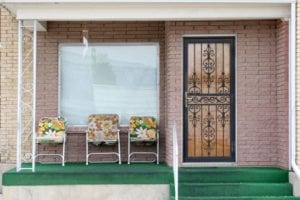
Photo by Emily via flickr, CC BY-NC-ND 2.0
What comes to mind when you think about a front porch? Many of us have memories of front porches, but I would propose that there is an iconic image of a front porch that lives in the American imagination—one of shared conversation, cool drinks on hot days, relaxation, observation, and peace. The front porch is a space that is in-between our private family space and our more public-facing community spaces. It is a place where we negotiate neighborliness and create our own definition of “community.” In many parts of Chicago, this space is often a battleground.
Let me explain this “battleground” by giving an example of a front porch located near my former office in Chicago. I worked in a storefront space on Division Street in the Humboldt Park neighborhood, a few blocks from a large public park. Every day after lunch, I would walk to the park, passing a brick apartment building with an open porch typically occupied by three or four young men, a pit bull, and occasionally an older woman. Even though I passed by hundreds of times, we never surpassed the stage of exchanging brief, nearly indiscernible nods. About a year or so into this routine, I was walking with an artist colleague to a meeting at an organization around the corner. For the first time, there was a verbal exchange. “Blow?” they asked, and then offered even more to the young black man walking alongside me.
It’s not surprising that I, a 60-something-year-old white woman, was never asked to purchase drugs on my daily walks, but to me the story illuminates certain characteristics of the front porch and highlights its essence as a negotiable space.
The front porch as public-facing community space is not static—it changes depending on its occupants and users as well as the context and environment in which it is located. Clearly my experience of the neighborhood was very different from that of my artist colleague. The streets of Chicago, as public spaces, are, to some degree, experienced based on identity. For a young black man in Chicago, the streets offer up a menu of challenges and a limited set of choices. Was that front porch on Division Street a space where neighborly nods are exchanged, or was it a space where drug sales, gang recruitment, and violent exchanges occur?
For Chicago and other cities like it, it is important that spaces like the front porch remain negotiable, and open to the possibility of neighborly exchange. If everyone that passes by that porch on Division Street is seen as a potential buyer of drugs, then the only negotiation that takes place in that space will be related to the illegal, underground economy. But if, as a city and as a society, we are able to maintain a diversity of users in our public spaces, then places like the front porch will remain within the space of negotiation, where civility resides and a community can define itself.
archi-treasures’ Front Porch Project seeks to negotiate community space within subsidized housing developments using the arts. The Front Porch Project was piloted in 2016 at Germano Millgate Apartments in South Chicago, where the somewhat utilitarian buildings that make up the complex have no actual front porches. The “Front Porch” then is a metaphor that represents the potential for the types of neighborly exchange that make communities strong.
Germano Millgate Apartments (Germano) were originally built to house union steel workers when Chicago’s steel mills dominated the industry. By 1994 however, the last mills closed permanently, South Chicago lost its former vibrancy, and the Germano complex became vacant and deteriorated. In 1996, the complex was purchased by the Chicago Community Development Corporation and renovated in order to provide 350 units of much needed low-income housing within the property’s 34 walk-ups and townhomes.
South Chicago today is still one of the city’s most economically distressed neighborhoods, and in addition to other factors like redlining and disinvestment, it never recovered from the disappearance of the steel industry. The 600-acres of prime lakefront property where the mills once stood are still owned by US Steel and often capture the imagination of Chicagoans. It has been seen as a site for various endeavors including the Olympics, the Obama Library, a velodrome, new eco-friendly mixed-use development, and more. But instead, South Chicago is one of many under-resourced Chicago neighborhoods traumatized by gun violence, and within the community of South Chicago, Germano is perceived as a flashpoint for that violence.
Restoring Vibrance to A Community
The Front Porch Project is a year-long program designed to support sustainable artistic intervention into sites of embedded poverty. It combines quarterly facilitated community conversations with a three-phase employment program for residents. Artists are invited to attend the community conversations, Front Porch Talks, as listeners. Afterward, they have the opportunity to develop project proposals and present them to residents participating in the employment program, called the a-team. Community engagement is a key ingredient of an artist’s successful proposal and should include a clear and practical plan for engaging the a-team, the entirety of Germano’s 2,000 residents, and the surrounding neighborhood. The a-team chooses the artist they would like to work with and the proposed project is implemented during the three phases of the employment program.
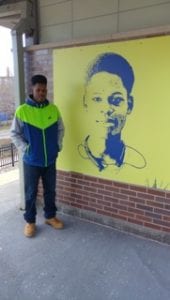
A young man stands by his Front Porch portrait. Photo by Joyce Fernandes/archi-treasures
During the Front Porch pilot, three artists presented their proposals and the a-team selected Chiara Galimberti, an Italian artist living in Chicago. Her proposal, Beam It Out/Bring It In, was developed in response to conversations heard during the Front Porch Talks about how Germano is perceived within the broader South Chicago community, and how residents felt they were being stereotyped negatively. Beam It Out, Bring It In encompassed several components including new sidewalk games throughout the complex, free portrait drawing classes for residents, photo sessions, and audio interviews. The project culminated in a website, large-scale photo portraits were installed on Germano buildings and neighborhood sites like the nearby transit stations, and a gallery exhibition that was first at a neighborhood art space, SkyART, and has subsequently traveled to Loyola University Museum of Art.
The project enlivened the Germano property visually, and successfully delivered the images and stories of the residents beyond the confines of the property itself. The addition of sidewalk games brought color to the complex while providing opportunities for play for the hundreds of children who live there. The Beam It Out/Bring It In exhibition at SkyART was powerful in its ability to connect people who live within walking distance of one another but don’t necessarily interact. The colorful large-scale portraits of Germano residents that have appeared in public spaces have elevated the presence of people who were formerly dismissed. As important as these physical changes, the impact to the lives of residents from the process that archi-treasures brought to this yearlong collaboration between an artist and a community are immeasurable.
During the Front Porch Talks, residents said their children had nothing to do because playground equipment had been removed and never replaced. These comments, combined with her own perception of the Germano property as “colorless,” inspired Galimberti to propose the development of sidewalk games to the a-team.
Nine different games were developed and then painted on sidewalks throughout the complex. To accomplish this, residents participated in internet research, design, and color selection. Some games were multilingual and others included inspirational phrases. The a-team chose the location for each game carefully, using their knowledge of where people gathered, which households had children, which families were multilingual, and where children would be safe while playing. The process included everything from challenging conversations about the use of shared spaces by gang members to learning how to use a power washer in order to prepare sidewalks for painting. Teamwork and coordination was necessary in order to get the project done within the established timeline and budget. Once the games were complete, the a-team organized a summer arts festival during which kids competed for prizes using the new sidewalk games.
archi-treasures experiments with different ways to open up the creative process to artists and non-artists alike. The American philosopher John Dewey believed that art is an experience that requires the participation of both the artist and the viewer. He also believed that art does not exist in a vacuum but rather is inclusive of context, history, memory, and culture. By embracing this perspective, artists and “non-artists” are equalized as creative beings that bring different skills and perspectives to the experience. In the Front Porch Project, residents of subsidized housing bring their unique stories and perspectives to the project while artists bring their training and experience in the development of creative projects. The collaboration between Galimberti and Germano residents was powerful in its ability to change lives while changing community.
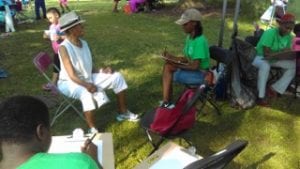
An a-team member paints a portrait of a Germano resident. Photo by Joyce Fernandes/archi-treasures
The central concept of Beam It Out/Bring It In was to make visible the lives and stories of the people who live at Germano. Galimberti launched a community-wide effort to engage everyone in the act of portraiture. Free art classes attracted 20 to 25 people of all ages twice a week during the summer. The a-team became resident experts and began drawing portraits at community events, including the Chicago Park District’s Night Out in the Park and the City of Chicago’s Play Streets. Those who were uncomfortable drawing, posed, and many people did both. By the end of the summer over 160 drawings were completed. The team then developed a website to showcase the drawings and conducted audio interviews with many of the subjects. The team also completed another group of portraits using photography and Photoshop editing software. These were printed onto 5-foot square panels and installed on building exteriors throughout the complex, complementing the colorful sidewalk games.
Summer 2016 was the pilot of archi-treasures’ Front Porch Project and was also a summer of record-breaking violence in Chicago with two murders taking place on the Germano property itself. The Front Porch Talks were full of anger and despair as residents grappled with the violence.
As an archi-treasures staff member, I was also grappling with this violence on a personal level. When I visited Germano early in the summer to check in on the project, I joined a team in a drawing session and was surprised and deeply impressed by the seriousness of their approach. They seemed to be intensely interested in the act of drawing, and specifically, the act of drawing portraits. I volunteered to be their model, then stayed to draw with them when we switched models. The room was silent as seven people examined the model—a fellow resident—closely, transferring their vision to paper. Each person had his or her own approach, and each drawing captured something special—her large hoop earring in one drawing, the way her hair fell over her forehead in another.
Drawing in that quiet room, I thought about the escalating violence in the neighborhood and tried to understand how a young person could shoot another young person, and how gun violence has become a daily occurrence in our city. As I looked around at the young people in this safe space, I sensed that they were learning to really “see” one another through the act of drawing, and considered the possibility that a tolerance for violence of any sort might decrease with more programs like this. In Germano Millgate, even though that space may not look like the Front Porch of the American imagination, it is becoming a space of positive interaction and community building.
Beam It Out/Bring It In is currently on view through January 6, 2018 at the Loyola University Museum of Art in Chicago.

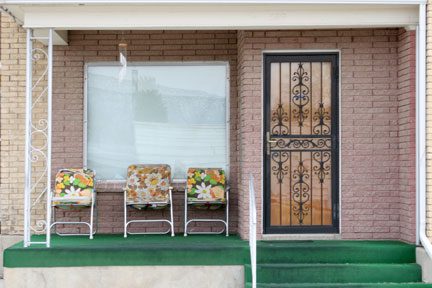

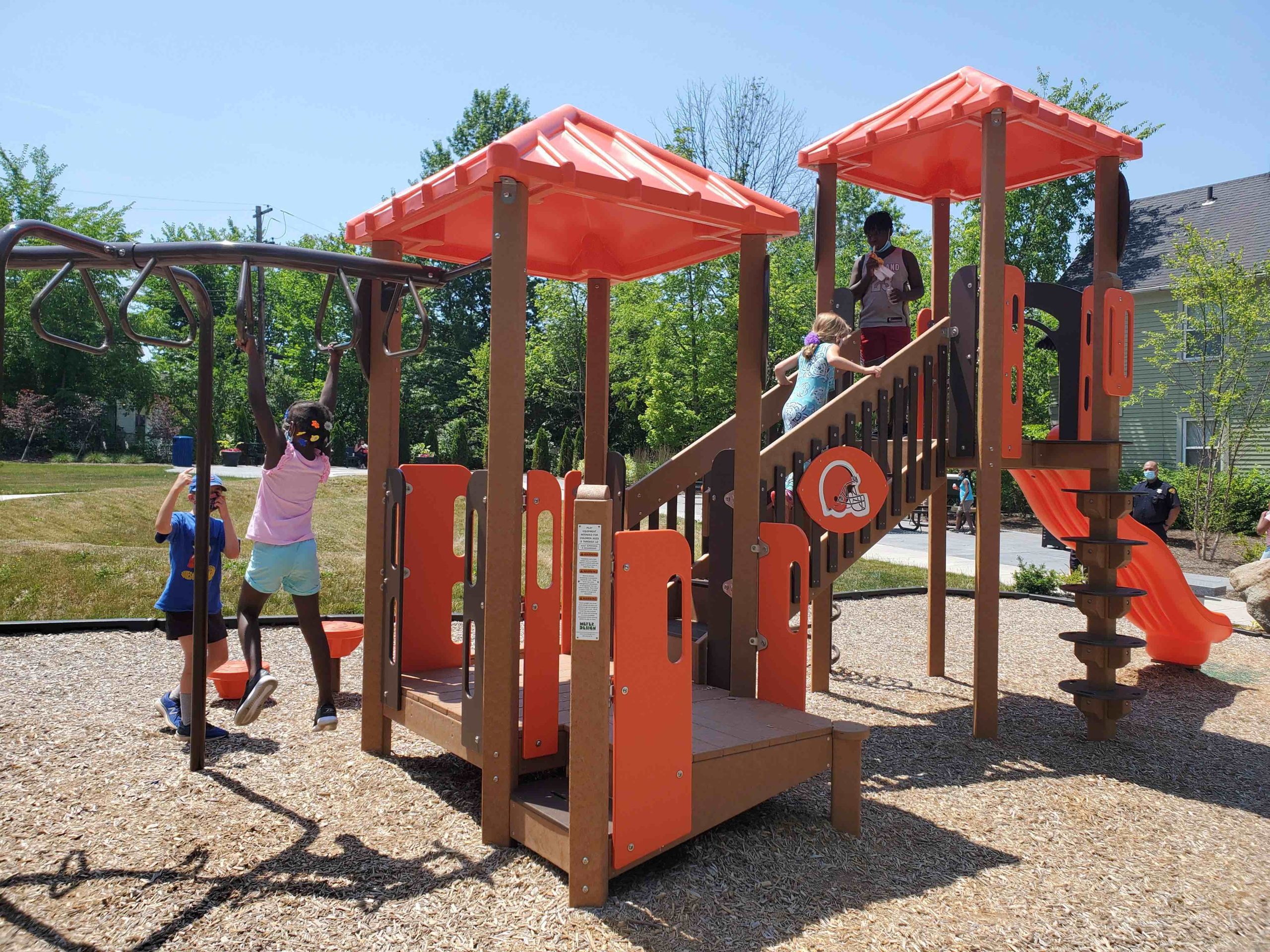
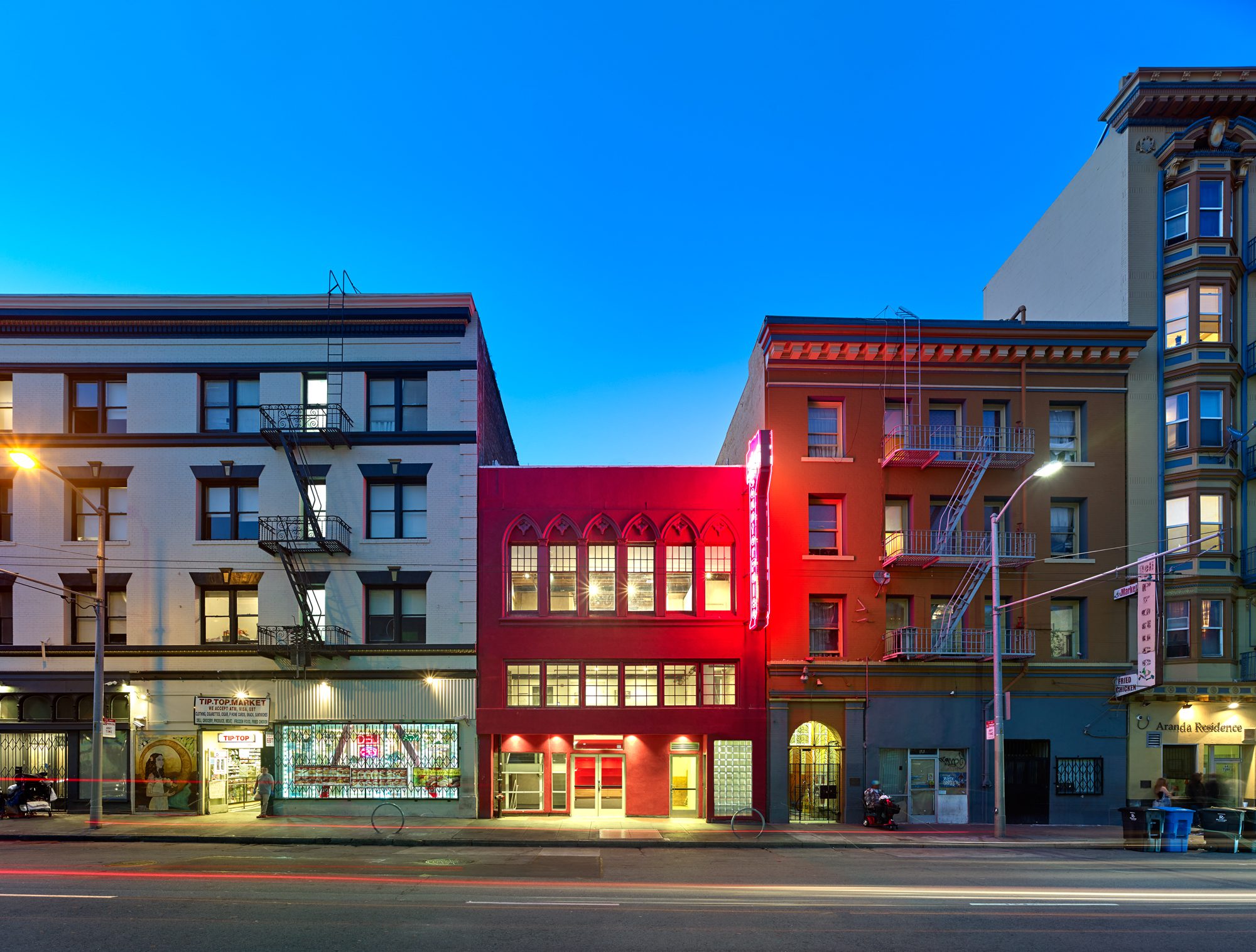
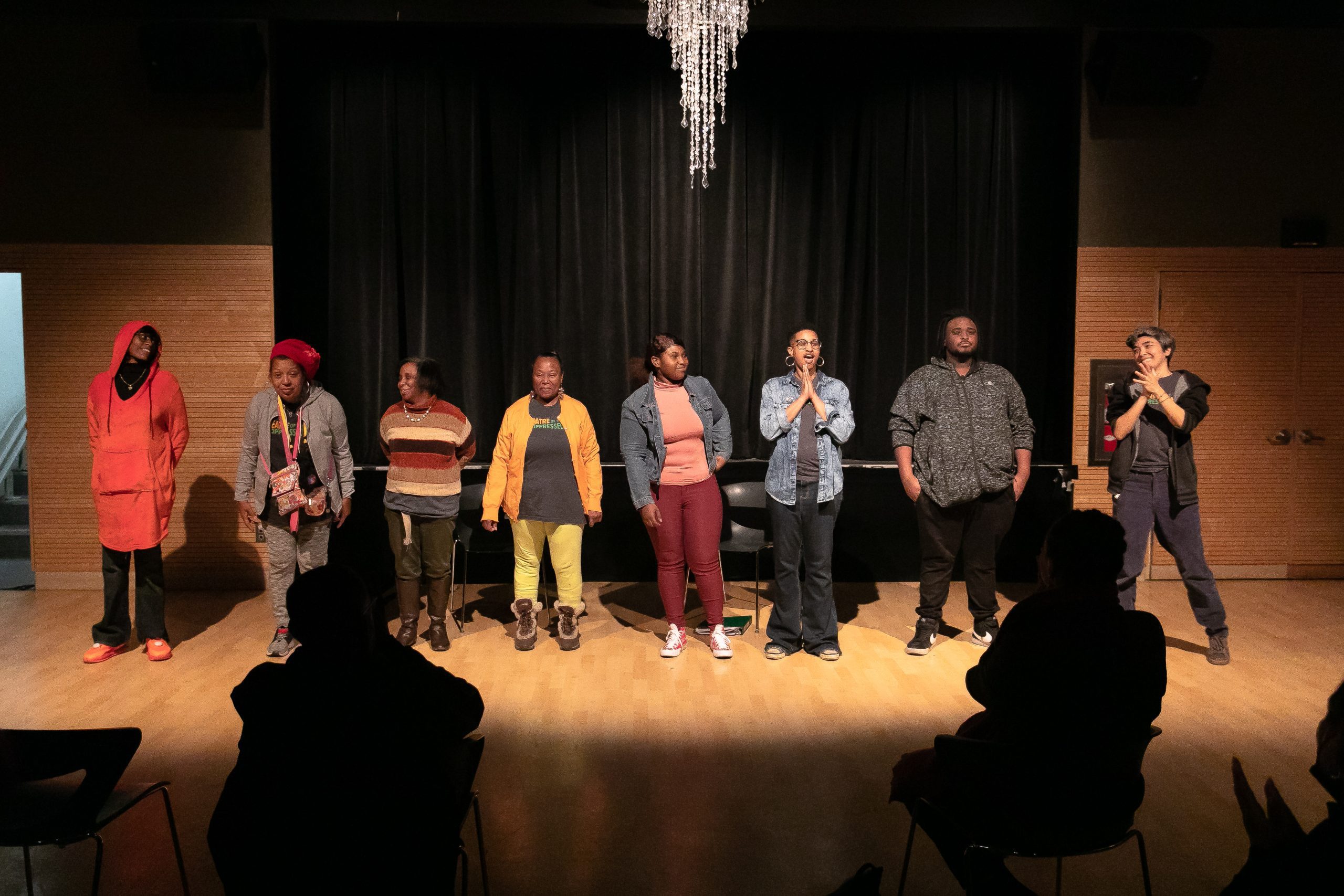
Comments